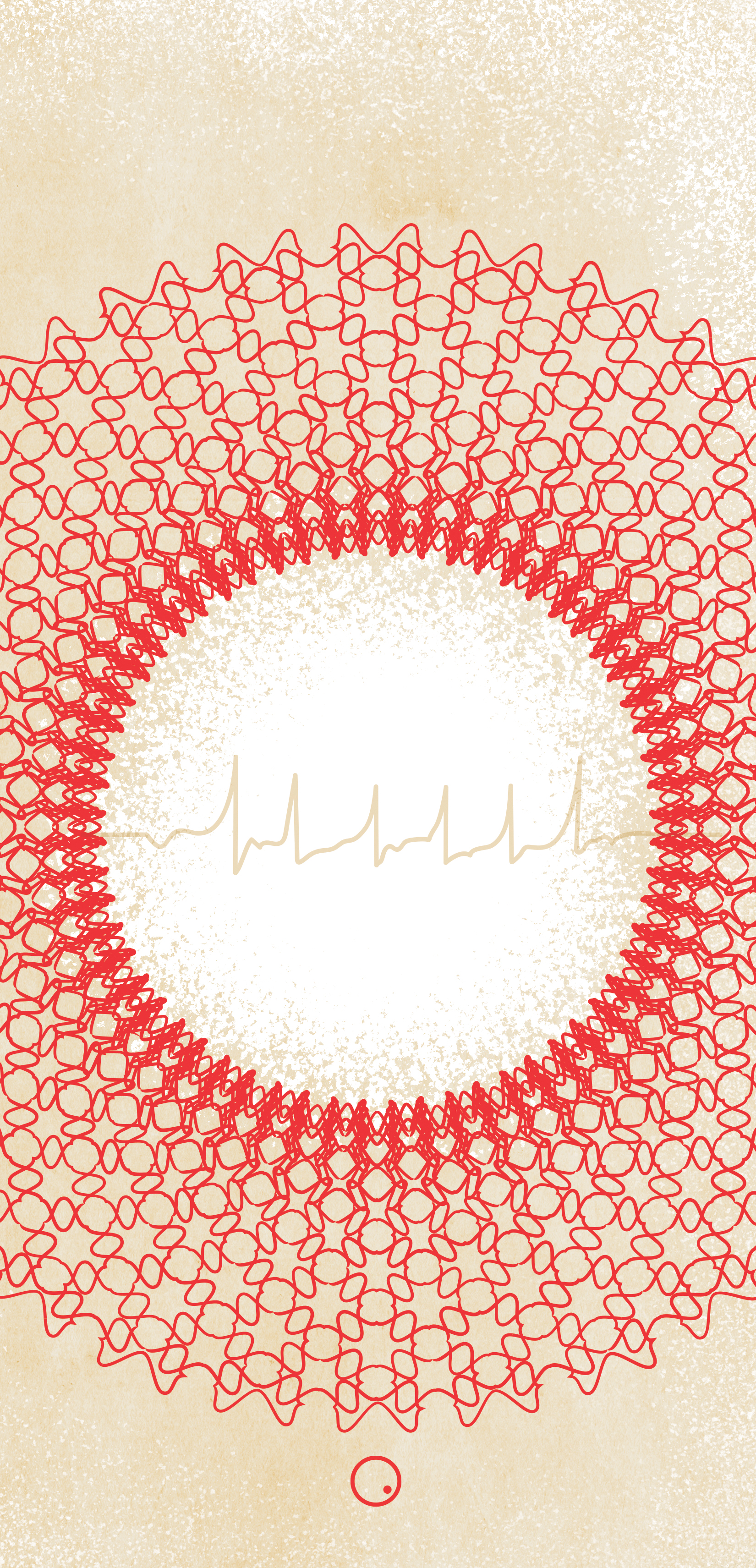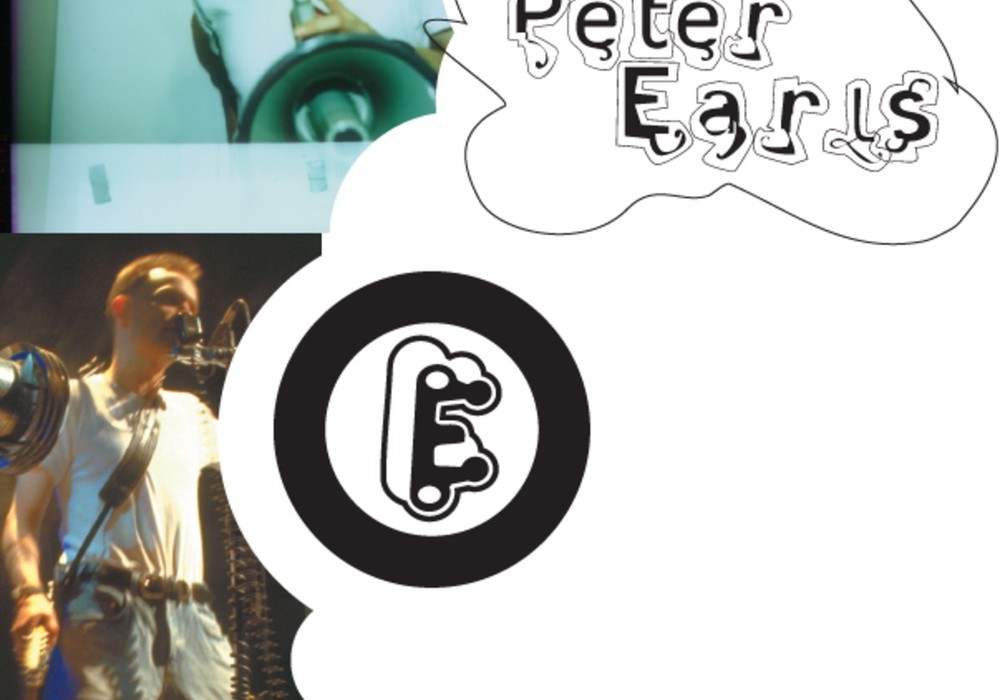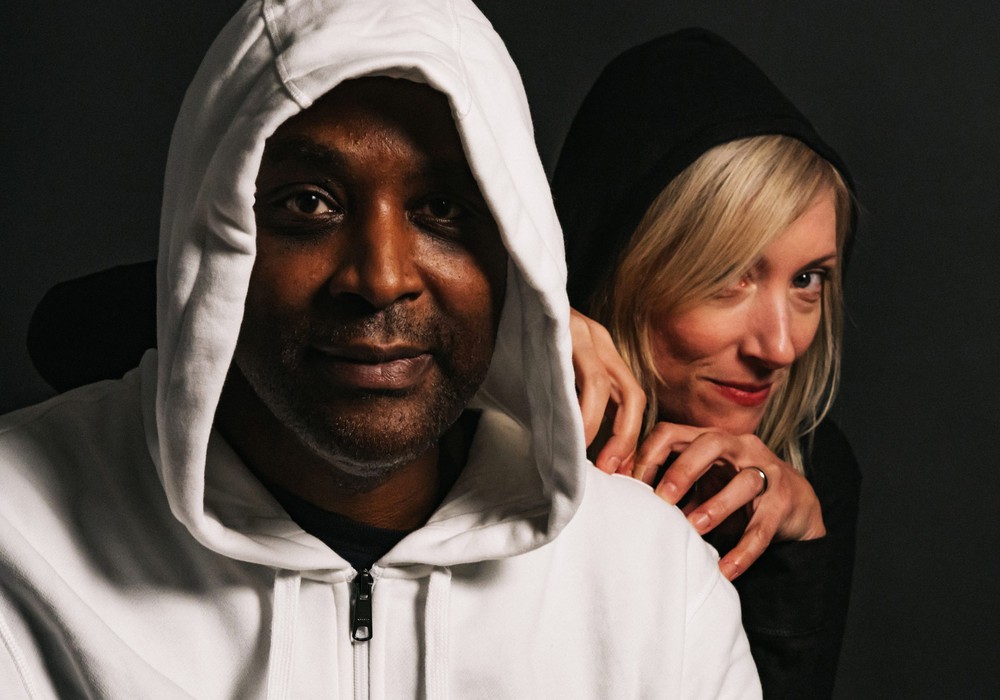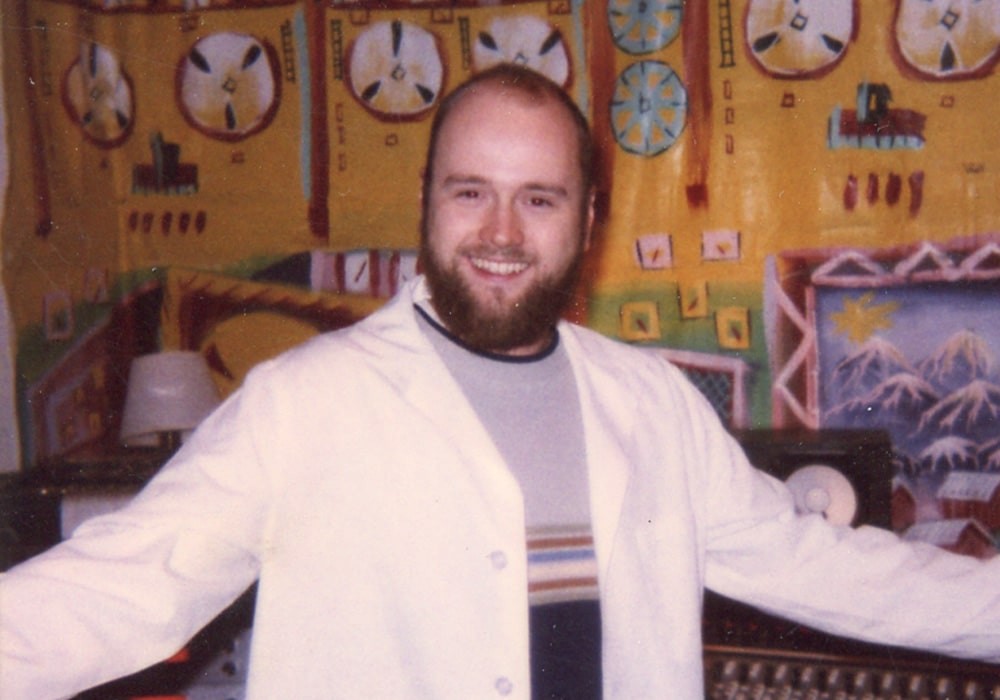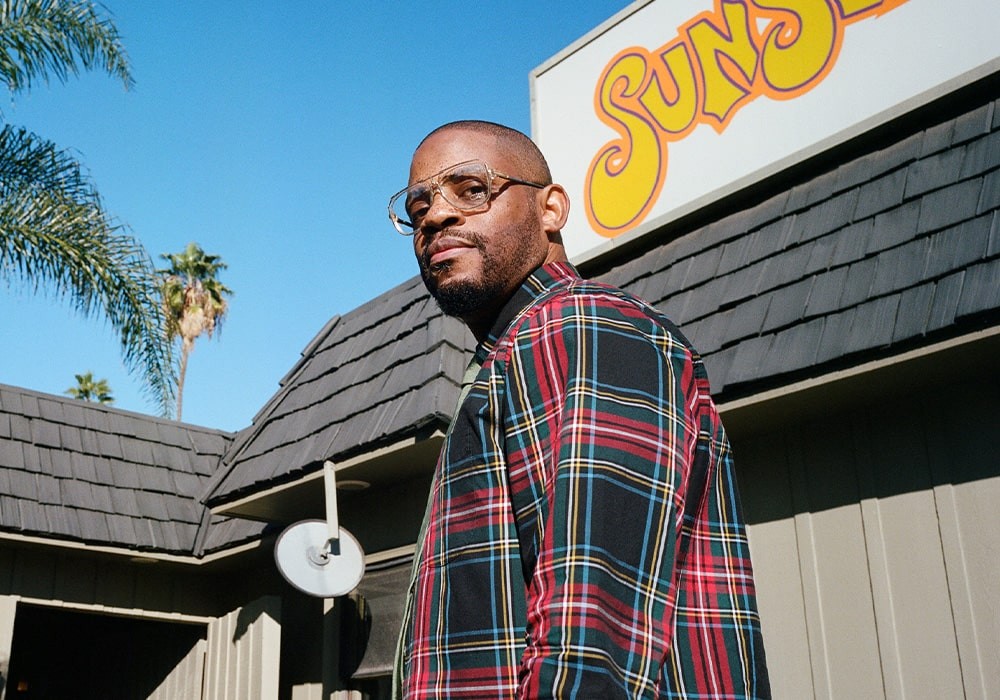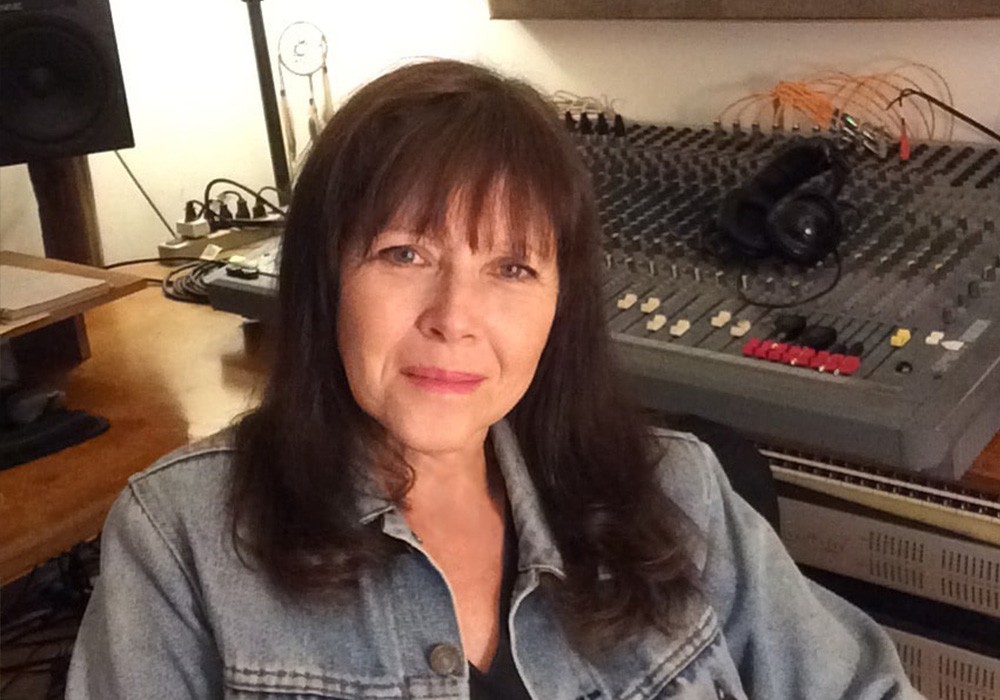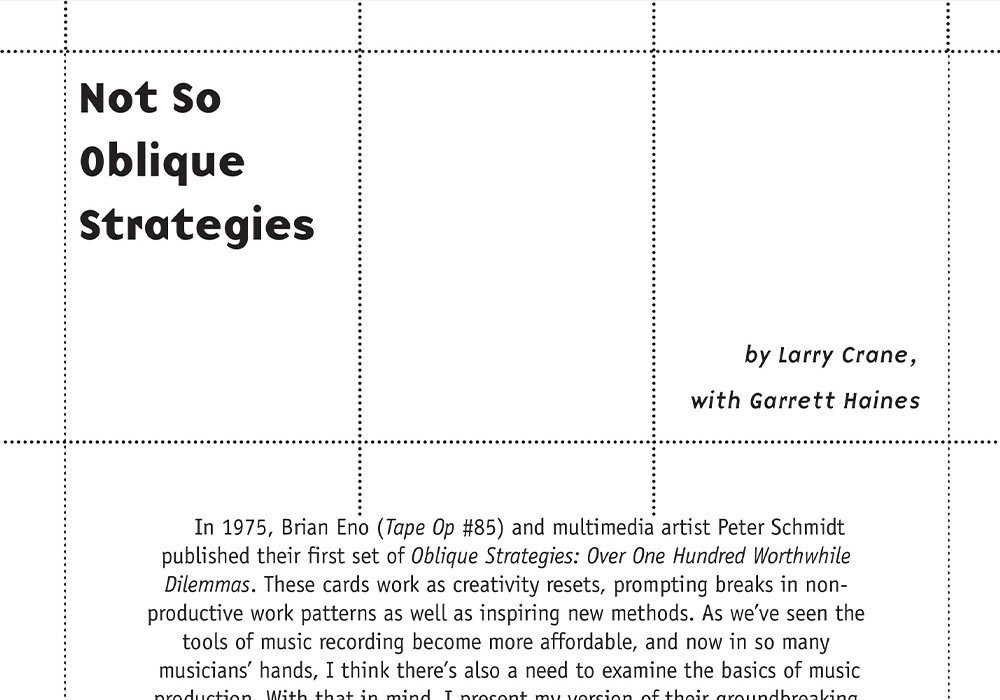Camper Van Beethoven was one of the first 'indie' bands as we know the term to imply. They were releasing their own records in the mid 1980s, a very unusual thing at the time. The band incorporated many styles of music into their sound, from punk, to ska, to eastern European folk to pop. Camper was never merely a sum of their parts; rather, they created a sound entirely their own. Though their influences were eclectic, their songs always had that distinctive Camper sound.
They had a sardonic aura about them. "Our whole thing was to go against the grain. If someone was doing it this way, we would do it that way, says bassist Victor Krummenacher. "Don't play it straight." They covered Sonic Youth's "Love Her All the Time" as a hoedown, and earlier covered Black Flag's "Wasted" in their own sarcastic style. They were existing with this punk rock DIY aesthetic, but musically and operationally they were making up their own rules as they went along. You could never pigeonhole this band.
After a prolific five years in which they released five LPs and an EP, they disbanded while touring for their second major label release, Key Lime Pie. It took 15 years for the band to set aside their differences and produce another new proper record (they posthumously released some outtakes and live material over the years). 2004's New Roman Times re-united the bands cast over the years. Collaborators David Lowery (vocals, guitar), Victor Krummenacher (bass, vocals), Jonathan Siegel (violin, vocals and too many other sounds to list), Greg Lisher (guitar) Chris Pedersen (drums) and Chris Molla (guitar, drums), and David Immerglück (pedal steel, etc.) all found time to work on the project that many true fans of the band were craving for many years.
2005 marked the 20-year anniversary of Camper Van Beethoven's first LP, Telephone Free Landslide Victory. In January of 1985, the California band, which had just relocated to Santa Cruz from Redlands, journeyed further north to Davis where they entered Dave Gill's Samurai Sound Studio. It was a modest 1/2" 8-track studio where the band basically recorded the songs in a traditional format, documenting their songs as they played tracks mostly live. The record doesn't have any of the eighties pop sound on the radio at the time, but then again, they weren't afforded the big studio budget. The record contained so many styles, from punk to ska to eastern European folk to American pop that the clean, straightforward approach to the recording let the record have a varied, eclectic sound. The record was released on Independent Project Records (run by Bruce Licher of Independent Project Press, also of the bands Savage Republic and Scenic).
Shortly thereafter, Camper began recording with Tom Fox at his Fox Studios in Felton, just north of Santa Cruz. They continued to work with Tom for their next two records. "Tom was professional, but he didn't have a lot of equipment," says David Lowery. "He was old school style, he tried to isolate everything." The first Fox recordings were for Camper Van Beethoven II and III, though some recordings used were leftover from sessions at Samurai. They approached the recording in a similar fashion to TFLV, recording basic tracks live and overdubbing the frills. "We recorded drums in stereo or mono, but we didn't do a lot of bouncing," says David. "You can tell when we did though. Everything gets lost. I wish we'd read those Beatles books. We could've bounced and re-did what we lost later, like the snare. But we were trying to be professional." II and III continued the Camper's absurdist psychedelic folk rock sound. It was also their debut release on their own Pitch-a-Tent Records label, which was pressed and distributed by Rough Trade Records at this point.
On their third LP, simply titled Camper Van Beethoven, the band made their most schizophrenic album yet, experimenting with a more psychedelic sound and incorporating more novelty-leaning songs ("Joe Stalin's Cadillac", "The History of Utah"). "Five Sticks" is "Ambiguity Song" from their first album, only played entirely backwards with added strummed acoustic guitar played forwards over it. They utilized more instruments too, including the Indian classical tabla and tamboura. It is more epic in scope, with snippets woven together to create collages and give the record a more artistic nature. Time signatures other than 3/4 and 4/4 began finding their way into the record too. Most of the songs clock in under two minutes, which adds to the varied feel. One song you're in a hoedown, the next you're in Velvet Underground-inspired tune with spoken word about aliens. The longest song on the record is a seven-plus minute epic version of Pink Floyd's "Interstellar Overdrive". By that time, Camper was a well-known band in the alternative, or college scene, as it was known then. Before long they were being courted by Virgin Records.
For their Virgin debut, the Patty Hearst-inspired title, Our Beloved Revolutionary Sweetheart, they were to hire a producer before entering a "real" studio in L.A. They eventually decided to go with Dennis Herring, not a household name as a producer at that time. David Lowery says, recalling their decision, "Dennis was like a session musician at the time. He played on the Flashdance soundtrack and stuff. He was trying to get out of all that — get into indie rock, alternative. He would come see us at shows and knew all these label people. He had lined himself up and I liked him and trusted him. He knew our vision and he knew the Hollywood ways." Dennis had been attending Camper shows for some time before he got involved with the project. "I really came at that record like a fan, and as a fan," says Dennis. "I wanted to hear the Camper record that sounded like they'd coalesced everything they did into their trip, and into one record. I felt like the record should try to include everything they were doing stylistically, and that I had to make that work, sound and arrangement-wise." They decided to track the record at Ocean Way, where Jonathan Segel recalls, "David Lee Roth was in the next room when we were recording basics. I was hoping for a high quality recording but very dry. Unfortunately, Dennis Herring and I had a lot of arguments about that. I can't even listen to it now. I felt like, and still feel like, Dennis Herring is a fraud as a producer. I feel like he's a gleaner. He epitomizes what a Hollywood production is to me. He's an engineer, and he's a great engineer but he's a man without aesthetics. His entire aesthetics are gleaned from what he's picked up from people around him that did things that were good and interesting. He stole a lot of ideas from me — the last time I saw him he told me that. We were talking about how he was working on the Counting Crows record and he wanted to play the guitar to just get it right and I think that's fucked up because the band should be making the record, not the producer."
Lowery liked working with Dennis because he "would let us go off on our tangents and then would bring us back. We needed that." When they entered the studio, they wanted to take advantage of all the professional gear and make a real record. Lowery states, "We never had that 'we don't like the commercial stuff' attitude. We liked Led Zeppelin, AC/DC, The Stones, The Beatles. We wanted to be Pink Floyd. In the big studio, we had access to all that stuff. Let's use it."
In the end, the record does sound professional but not timeless. Victor notes, "Our Beloved doesn't age well. Its the most eighties sounding record." Lowery adds, "We felt like Our Beloved sounded dated. Our engineer was all AOR rock-sound influenced." Its completion also marked the end of Jonathan's presence in the band. "The label wanted just to deal with one guy and that was David. I'm a commie. I like more social, democratic arrangements for how to work things."
For the next record, as Jonathan would have liked it originally, Camper abandoned the sound they achieved for Our Beloved Revolutionary Sweetheart and opt for a more classic, vintage sound. "With Key Lime Pie, David came to me so specifically," says Dennis Herring. "He came to play me songs in my basement [Dustbowl], and prefaced them by saying he wanted to make a dark folk record, but if after hearing these songs I didn't think they were great, we could make a rock record instead. Well, the songs were great. I immediately heard this thematic sound way to record the record (treated cymbals, super dark stereo snare trip, stuff like that) that stuck in my head." Lowery adds, "With Key Lime Pie we were more confident and Dennis was more confident. I wanted it to sound like September of My Years by Frank Sinatra. So we literally went to Capitol, where that was recorded, and did all the basic tracks there." There was a lot more thought put into the record this time around. "Our Beloved was definitely about recording what CVB were doing, and just trying to do that well — get the right sound, pick the best songs, work on the playing, etc. We'd all felt that record really worked, and I think that feeling really freed us up to do a more tangented record next," says Dennis. "David really came to Key Lime Pie on fire — more comfortable building a record in the studio, to a great extent. He had tons of ideas and energy for arranging, and I think my main role was to help him make all that work out. For example, I remember saying to David the basic track for "(I was Born in a) Laundromat" hadn't come out that great, and that I was kinda disappointed with it. He said, 'Why don't we just use tape loops and stuff?' So we made multitrack tape loops, samples of some instruments, etc., and rebuilt the track that way. I think we were a couple of years ahead of available technology on that front, because I remember it was damn hard and laborious to get all that to happen. David was well into letting that song be kinda robotic, and I seem to remember personally rippin' some sweet rock riffs on that one." They decided to push themselves and toy with new technology too. David remembers, "On Key Lime Pie there are loops and MIDI sequencing. The drums on 'Flowers' and 'Laundromat' were part of drum loops. We wanted it mechanical. On 'Jack Ruby' there are guitar notes that were put into this MIDI device and was part of this echo sound that were synched with the drums. You could put a kick or a snare through it and it would generate a code, this long process and you'd have to put the tape upside down. It would average out the pace and sync it up. It was all so new. It makes a FSK tone on the tape. I liked the mix of organic and tech... like Kaleidoscope who used folk and all this electric stuff." Victor remembers approaching the record differently than Our Beloved. "Key Lime Pie ages well. There was a lot of dialogue about making it sound the way it does." "We learned to do pre-production, a lot of arranging beforehand," says David. "We did the basic tracks and got heavy into the sounds. A lot of rehearsal. I'd get the arrangements first and get the words later, change them to fit the songs when they're done." In so many ways, Key Lime Pie is a much better record than Our Beloved. It achieves the dark vision David was after. One example of why it sounds so dark is when they mixed the record, they put restrictions of frequencies they could use. "I remember telling the engineer, Csaba Petocz, that he couldn't add any EQ above 1 k to anything!" says Dennis. "He could only get the high end right through mic choices and messin' with low mid and low end. He said it was like recording with one hand behind his back."
While in Europe on tour in support of Key Lime Pie, Camper's personal differences made it impossible for them to work with each other. Victor states, "Camper makes people feel happy. There's a unique chemistry. Bands are often the sum of their parts and you have to let it go. Part of our breakup was because we wanted it all our own ways. You have to let it go, then fuck with it. We couldn't do that anymore."
Given Camper's success over the four years they released records, there was continued interest in their music, thus a demand for more material. Their first posthumous record, Camper Vantiquities, was pulled together from outtakes from their pre-Virgin recordings, even including a cassette 4-track session. It also included a then out-of-print EP, Vampire Can Mating Oven. Then, in 2000 they released Camper Van Beethoven is Dead, Long Live Camper Van Beethoven on Lowery's recently revived Pitch-a-Tent Records. Unlike Vantiquities, there were no older outtakes. This time David, Jonathan, and Victor had reunited to record a couple of new songs for the release at David's new studio, Sound of Music, in Richmond, Virginia. They then attempted to put something together that resembled an album.
"It was a hybrid between old and new." David says. "There was nothing left after Vantiquities. There were only snippets of stuff, and live stuff. We got together and added to some of the old stuff, and recorded a few new songs. Like on 'Klondike' for instance, we used an Optigan beat and added Jonathan's violin from 'Pope Festival' (an old song, released only on the compilation At Diane's Place) but slowed it down. We put it together like a DJ mix, re-mix kind of thing. The strings on 'Tom Flowers' are from Key Lime Pie, but we changed the key in the computer. Chris Pedersen played a bunch of drumbeats in a studio in Australia and sent them to us. We also played along to a bunch of live recordings to make them more hi-fi." It was a curious way to make a record. John Morand, an engineer at Sound of Music, was involved with the unique approach to the mixing of the record. "We mixed it reels at a time, as if it were live. Each reel in real time — one pass. We used automation but we dumped elements onto the tape. If we had a live song we would put the DAT tracks on one and two, then it could go into something like 'Tom Flowers', which used all 24 tracks, so we could fade out the crowd noise into the next song so everything flowed. We did the whole project in three days."
David and John had met in 1990 when David moved out to Richmond, Virginia. The first project they worked on together was recording the German band FSK. David needed an engineer for the project and he had recently purchased a cassette tape at the local grocery store of a band John had recorded. They did more projects together and finally settled into a working relationship with a studio called Turpentine Mill. They would rent it by the month, and they eventually bought it in 1993. It had a Studer 2" 16-track, two Neve pres, a Sony tube mic, and an MCI 428 console (serial #3). The first project they worked on in their new Sound of Music studio was Sparklehorse's Vivadixiesubmarinetransmissionplot. David had established his post Camper band, Cracker, for some years by then and eventually a couple of the Camper members began to ease their way into Cracker's touring act, and the thought of working together seemed more and more likely.
A couple of years later, in the week between Christmas and New Year's, Camper got together at Sound Of Music to cover the entire Tusk record by Fleetwood Mac. The idea was to tell people it was recorded on a cassette 4-track during a snowstorm in 1987 when the band was stuck inside a cabin. "It was like method acting," says Lowery. "We actually recorded it on Radar (a 24-track digital recording device that is laid out similar to an analog deck) but we tried to use only four tracks. We mixed it to cassette, or through a cassette deck. We did leave clues in there though. There are cell phones ringing and some snippets of songs that came way later." "We basically sent ideas to each other but no one recorded anything until we got to Virginia." says Jonathan. "We recorded the entire record on two tracks of the Radar and just overdubbed to that. Chris Pedersen [drummer] didn't play on it, but we used a drum emulator called "The Drumulator" [by EMU] which was made right outside Santa Cruz and Chris actually recorded the drum samples for it in the eighties. It was Chris Pedersen rising from the past! I think we ended up mostly using a Korg Electribe for most of the drums though. I'd been wanting to do that for a long time. What we realized after working together on Long Live is that it showed us that maybe David and Victor and I could work in a studio together again — so that and Tusk were like practice sessions for New Roman Times.
Camper finally decided to make a new full-length recording. Living apart from each other made the recording a bit more challenging, but all the factors were in place. Jonathan and Victor both had Pro Tools home studios, and they had been recording together for a long time. "We each brought in little snippets and ideas to work from," says Victor. "It was a very informal, loose process. David kind of leads it but you just throw things into the pool and he edits through and figures things out, what he wants to use. Compared to other efforts there was a lot of collaborating and mutual songwriting. We used to sit around and hash things out in a rehearsal space but we couldn't do that this time because of time and space." "A lot of songs started out as demos in Pro Tools, then sometimes they would really become the songs," says David. "We might do the drums at Sound of Music to the demos. We needed to flesh out the arrangement ideas but sometimes we would just keep everything." The majority of the record was captured on the Radar system, which Lowery had been using almost exclusively since 2000. "I can sketch stuff out and keep stuff which is a benefit to the creative process," he says. "I don't have to worry about whether it's a good take or not. Just spend the day playing and take it home and see. You don't have to worry about burning a bunch of tape. I decided that the benefits of digital recording concerning the creative process outweighed the sound consideration. I still prefer analog tape but [Radar] is cheaper, and the gap is narrowing. I've gotten more used to recording this way too. Camper always had that mix of studio and home recording, so we wanted to keep that in there and this is the modern way of doing it. It's what we would have done in 1985 if we had these tools available to us. Mostly, we'd flesh out songs with a drum machine and put drums on top of it. Some songs, I'd track with a drummer and my acoustic guitar and build on top of that. Other times we'd all be in the room together." "The only thing we tried to do with this record is move it along as quickly as possible," says Victor. "We were still in the process of feeling each other out, learning how to play and work with each other again. We knew if we did a 'formulized, work it out' kind of record we could upset our chemistry really quickly. It was conscious on my part, and there was some dissent. I don't think Greg was entirely happy with those decisions but I thought the momentum was working well for us so I sort of went status quo. Sometimes we would write a song, do a quick demo at my house to a click. For instance, "Hippy Chicks", we did a demo, I played bass, David took it to Richmond and had Miguel Urbitztondo play drums on it, then the bass didn't line up so I had to redo it so there was a lot of back and forth. Camper's methodology is just to work with chaos. And my methodology as an engineer is to be really on top of it. Sometimes David doesn't have the patience. I do a lot of comping, whereas David will just find the take he likes the best and use it. I did a lot of work with Jonathan too — he's also kind of impatient. I love using playlists. Not so much with bass though. I would usually do a solid take and a few fruitier takes and throw in the fruit here and there."
Though Camper's method of "working from chaos" may be true, they did have some concrete ideas of how they wanted the record to sound before they began the process of documenting it all. David says, "There was a debate about how much synth and electronica Camper would've involved if we'd been together for the last 21 years and the consensus was we would've used the digital technology as soon as it was available. Sound-wise, we didn't really have a particular idea. Key Lime Pie was our best sounding record, and we wanted it to have that coherence, but we didn't want it that dark. We wanted it lighter. We felt like it should encompass all of our records stylistically. A lot of bands, when they do reunion records either try to make their sound totally modern, something the band would never have done before, or they take the peak of their career and try to make a time capsule. We've been listening the Pixies, Radiohead, Counting Crows, so we wanted to put that influence into it. It comes back to us too. Listening to Pavement — I think we had a lot of influence on them. And we listened to a lot of early prog rock." "We openly talked about bringing in the more proggy, Monks sound into Camper," says Victor. (Monks of Doom were an offshoot of Camper started in the late eighties that was far more prog-rock oriented than Camper. It included all the members of Camper, minus David and Jonathan, and added David Immerglück, who also appeared on Key Lime Pie and toured as a multi-instrumentalist during the Key Lime Pie tour.) "I've been listening to the new Wilco record [A Ghost is Born], and Sear Sound recordings, very beautiful recordings. Would it work for Camper? I don't know. Jonathan and David have very subversive sides. Their idea is to make something sound interesting and not these classic sounds. I like the orthodox recording approach. If I have my druthers, I'll have a Neve console, Class A, etc. For instance, the song, 'New Roman Times', I think plays on everyone's strengths. That rhythm guitar, a nylon run through a Pod, Greg's great guitar, David's pedal steel. It sounds so lush. But Camper is more 'throw it up and use what you got'. I don't think it's healthy to work with one model. That's one thing I like about Camper."
While many of the songs on New Roman Times were thrown around and pieced together, there were others that were recorded mostly live in the manner they had done in the old days. "Might Makes Right", "...Uzbekistan" — those were done virtually live. All the drums were recorded at Sound of Music. "I'll tell you, I hate doing drums anywhere other than the best places that are designed for drums. I need my Coles, my Telefunken..." says David. Sound of Music is such a place. David states, "The A room has 15-to 16 foot ceilings and is 24 by 60 feet, which we used a lot, for the big sound, like in '51-7'. But for some of the songs, like 'New Roman Times', we used the iso booth. We usually would use five to eight tracks for drums. We had a few different engineers for the sessions. Alan Weatherhead, John Morand, Brian Hoffa and Casey Martin, who is our live sound guy. One standard thing we'd do with mic'ing the drums is use the 'crotch mic', which was a Telefunken, pointed at the crotch. That's our sound."
One idea for New Roman Times was to have all collaborators from the history of Camper appear on the record. This included Chris Molla, an early collaborator, write a song for the album, all the parts, and send it to the rest of the band to add to. John Morand notes, "Molla sent us a 2-track version of his song ['Sons of the New Golden West'] and we added to it. It had MIDI drums and everything. Everyone learned the parts and re-recorded them and we mixed in the 2-track he sent us but it's pretty much all re-done to the demo." The same was done for "Discotheque CVB", which David recorded in Reason and used as a guide. There is a little bit of the Reason tracks left in the final mix, but most is real instruments including seventies-sounding keyboards and funk wah guitar. "We wanted the record to have a varied sound so we wanted to bring in all the non-core people that had a great deal to do with our sound at various stages of our career. Chris Molla, David Immerglück. They were very influential at different stages. It gave the record a more broad, all encompassing sound," says Victor.
Seeing that there are many hats worn in the band, it wasn't always easy to decide who got to play what on each song. Jonathan notes, "A lot of it had to do with personality. For instance, David Immerglück has an enormous personality and he kind of takes over a situation he's in and other people don't want to deal with it so they just back off. He ended up doing too much shit on the record where Greg should have done more of the guitars. When we worked with Dennis, we had similar differences in that he also has an enormous personality. I would always rather have the elements of the people that are involved even if they produce things that aren't perfect. And Victor and I disagree about this, as did Dennis. I would rather have someone sing out of tune if they're the one who sings backup in the band. I'm more into the reality of it rather than trying to create the perfect document."
For the nor-Radar portion of the recordings, Pro Tools was the program of choice. "When I lived in San Francisco (before moving to the East Bay) we had the studio in the basement. I drilled a hole in the floor to the kitchen. We had a [Digidesign Digi]001 upstairs, and a 002 downstairs. It was great," says Victor. For David, he would take ideas home and work on them there. "Its always easier for me to write words if I have a basic track. So I would sit in my basement with my Mbox and my Soundelux microphone. Half the time I don't even bother to write things down anymore." When it came time to start the mixing, they opted to mix it all to 1/2" 2-track at Sound of Music. "We started mixing as soon as we finished recording so things were still evolving. There were a lot of places where a few people had tried the same part — like David would try a solo, and David Immerglück would try a solo. We had to decide what would stay." says John. "We mixed the record in about two weeks. I had made a lot of Cracker records with David, and Cracker is not a democracy, it's just two guys. Camper is much more of a group effort. So the mixing was less about the song and more about, 'Let's make sure we get everybody in there'. Alan Weatherhead mixed a few songs too. He did 'That Gum You Like is Back in Style'." For the mixing process, the band opted not to all be there because, as Victor says, "We'd probably kill each other. It's so long and it's the most important process so we thought it was best to defer it." Victor would receive mixes as MP3s via email, but that wasn't an accurate representation for him. "I'd get the MP3s to evaluate but I'd never do that again. The compression of the stereo field was so gnarly — delays get cloudy, you can't hear them clearly. You miss so much. That was my big lesson."
In the end, the album achieves what they set out to accomplish. It's eclectic in the way only Camper can be, yet it all fits together with a new direction as if they had continued where they left off 15 years ago. Victor recalls of the record, "With the method we used, you just gotta go with the flow. We didn't have a lot of time or money. I would've loved to have more time." It's unclear whether Camper will make another record, but so far, everything seems to be working as well as can be expected. Victor adds, "Camper is political both interiorly and exteriorly. We're not the smoothest working group of people. We've been prone to fight and we always will be. Some people are willing to admit that and some people aren't. That's the way it goes."
Adam Selzer is a member of Norfolk and Western and partner in Type Foundry Studio.
